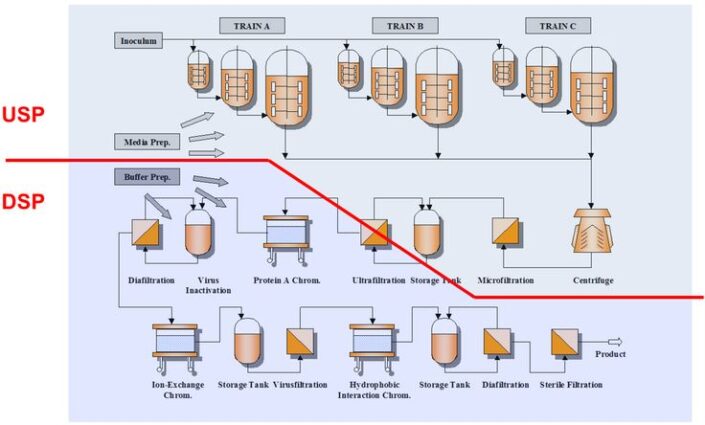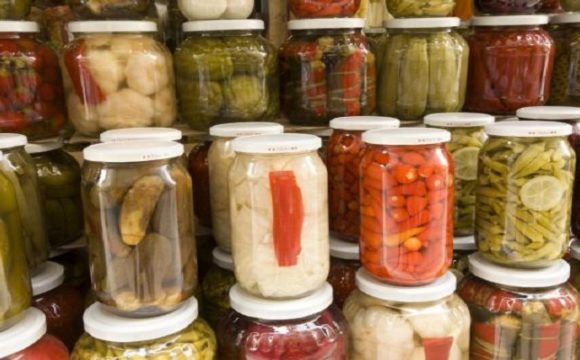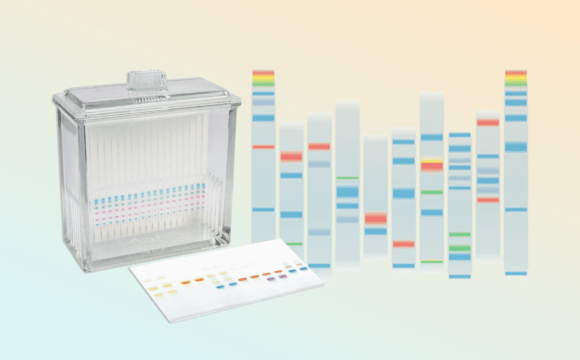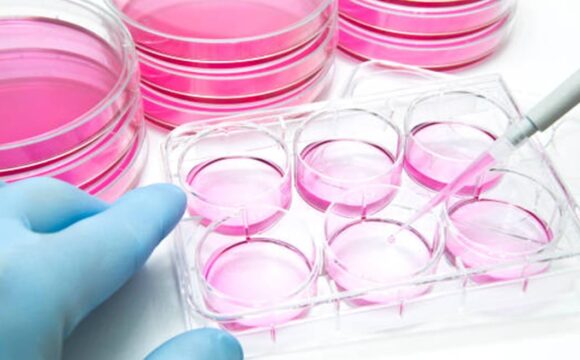Biological raw materials such as cells, cell components, organisms, and viruses can be used to manufacture a range of useful products. The processing of such biological materials into utilizable products is what bioprocess is. Numerous emerging industries and technologies utilize bioprocessing as the key process to facilitate the production of biofuels (e.g. ethanol and biodiesel), new vaccines, therapeutic stem cells, flavors, energies and many more. Bioprocessing plays a pivotal role in biopharmaceutical, food and related industries. The system of bioprocessing is solely based on the growth of microorganisms under controlled conditions encouraging the production of a product at an economically viable yield. Production of beer from yeast is also a key application of bioprocessing.
The industry has shown dynamic changes in the last 50 years or so. The bioprocess industry has conquered many introductory difficulties to empower expanded effectiveness and efficiency across the formative and assembling stages. The most crucial challenge needed to be dealt with is the reduction of costs of the developments involving bioprocess. Installation of high throughput systems to satisfy the customers and to look after the complex requirements for the regulations of bioprocessing of products is pivotal. These efforts have been specially taken to inspire significant progressions with respect to cell lines and culture media utilized for the development of therapeutics. At first, bioprocessing depended vigorously on hybridoma cells to deliver antibodies, with relatively few options accessible. Hybridoma cells posed various challenges, particularly affecting immunogenicity, which in turn diminished remedial potential. In addition, antibodies were gathered from different creatures which were utilized now and again as live bioreactors, restricting yields while likewise producing high fluctuation rates. The advances in cell culture and related information envelop many years of experience, at last endeavoring to carry noteworthy treatments to patients sooner. Be that as it may, the field requires a uniform system of maintenance and encouraging international collaborations.
Numerous stages are associated with the bioprocess technology. These stages incorporate volume production, downstream processing, purification, upstream processing, etc. Manufacturing key oligosaccharides (OS) namely, galacto-oligosaccharides and fructo-oligosaccharides are examples of the rapidly emerging areas of application in the respective industry. These OS have been proven to be owing to several health benefits. With the upgradation of techniques and instrumentation becoming further sophisticated, bioprocesses may also pose importance in other domains where chemical processes are being utilized. A report on the bioprocess technology market is indicative of a comprehensive evaluation of the bioprocess technology’s global market. It combines qualitative insights and historical data in order to make verifiable projections about the market. The market is segmented based on various parameters and the size and potential of each segment is studied.
Upstream and Downstream processing
Bioprocess is categorized in two main stages – the Upstream and Downstream processes – these are interrelated and involve every single process starting from finding the desired raw materials to recovering the products.
The upstream part of a bioprocess is indicative of the initial steps which incorporate microbes and cells that are grown. To give an example, it includes bacterial or mammalian cell lines in bioreactors. Upstream processing consists of all the stages that are associated with inoculum development:
- Selection of producing organisms
- Strain screening
- Media Preparation and optimization
- Cell Culture and process control
- Cell Separation & Harvest.
Unlike upstream processing which is the initial part of bioprocessing, downstream processing marks the end of it. The downstream process involved recovering the final products as well as purifying it to get rid of the impurities. Downstream processing involves:
- Solid-Liquid Separation
- Cell disruption
- Isolation
- Purification
- Formulation.

(Image source: Semantic Scholar)
Key Challenges
The past 2-3 years have seen an upsurge in the Covid-19 pandemic affecting huge populations throughout the globe. Immunizations had been given to a large population in order to provide them with sufficient immunity to tackle the same. Bioprocess played a key role in the development of vaccines and has seen a great surge throughout the pandemic. However, the pharmaceutical and medical industries were presented with challenges such as disruption of the supply chain. shortage of key materials and a reduction in the number of workers in the facilities. The biggest challenges of bioprocess technology are time and cost. Shortening the length of the time taken from drug discovery to the supply of the drugs prepared is the main motive of every single company. Thus, wise implementations to tackle such challenges are crucial for efficient bioprocess production.
References:
- “Bioprocessing – Definition, Upstream and Downstream Process.” VEDANTU, www.vedantu.com, https://www.vedantu.com/biology/bioprocessing. Accessed 14 July 2022.
- “Bioprocesses – an Overview | ScienceDirect Topics.” Bioprocesses – an Overview | ScienceDirect Topics, www.sciencedirect.com, https://www.sciencedirect.com/topics/engineering/bioprocesses. Accessed 14 July 2022.
- “A Brief Overview of Bioprocessing | Big Picture | Lab Manager.” Lab Manager, www.labmanager.com, https://www.labmanager.com/big-picture/bioprocessing-overview-and-trends/a-brief-overview-of-bioprocessing-25962. Accessed 14 July 2022.










